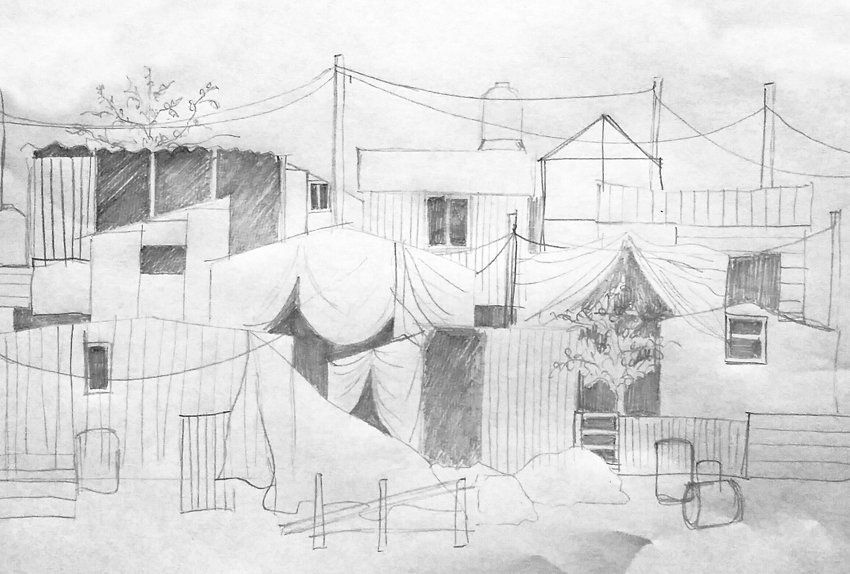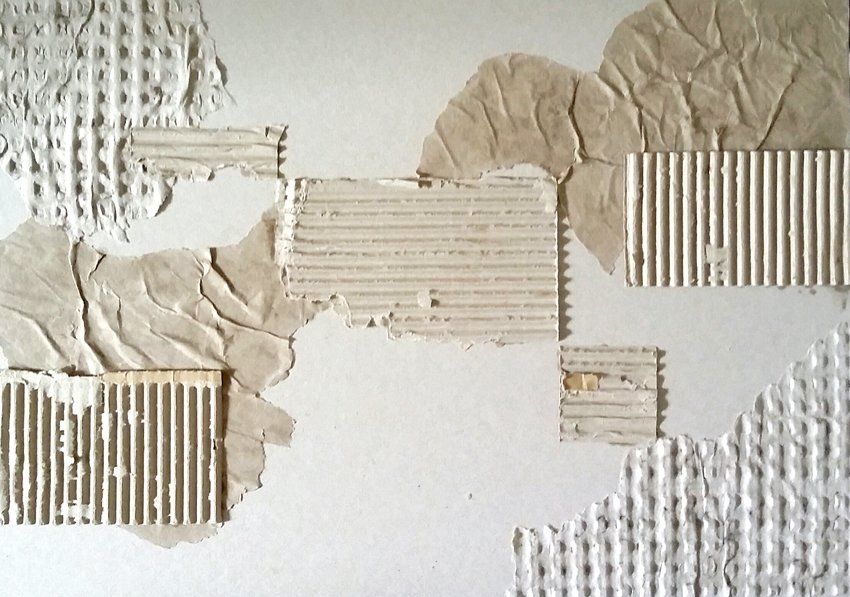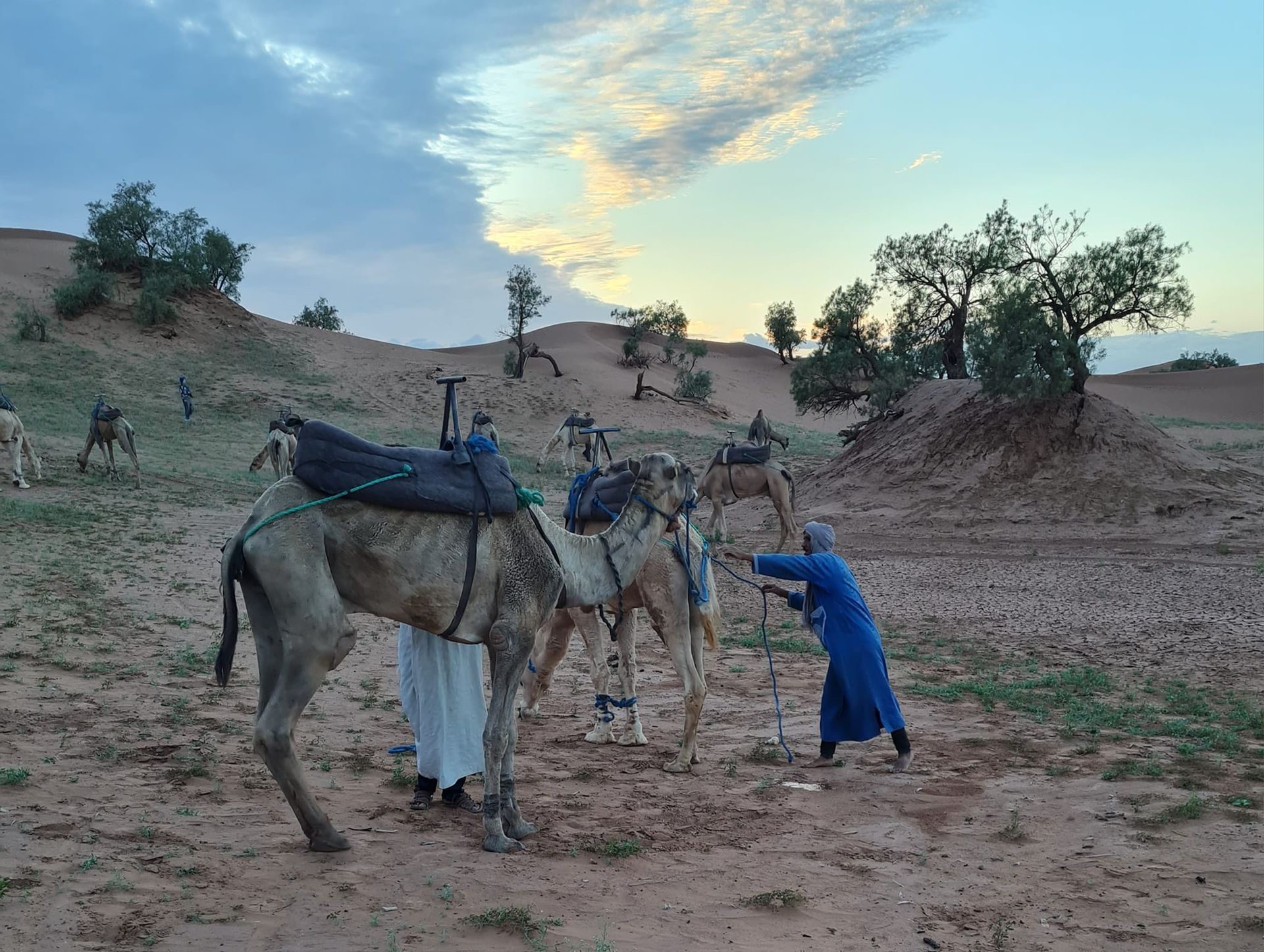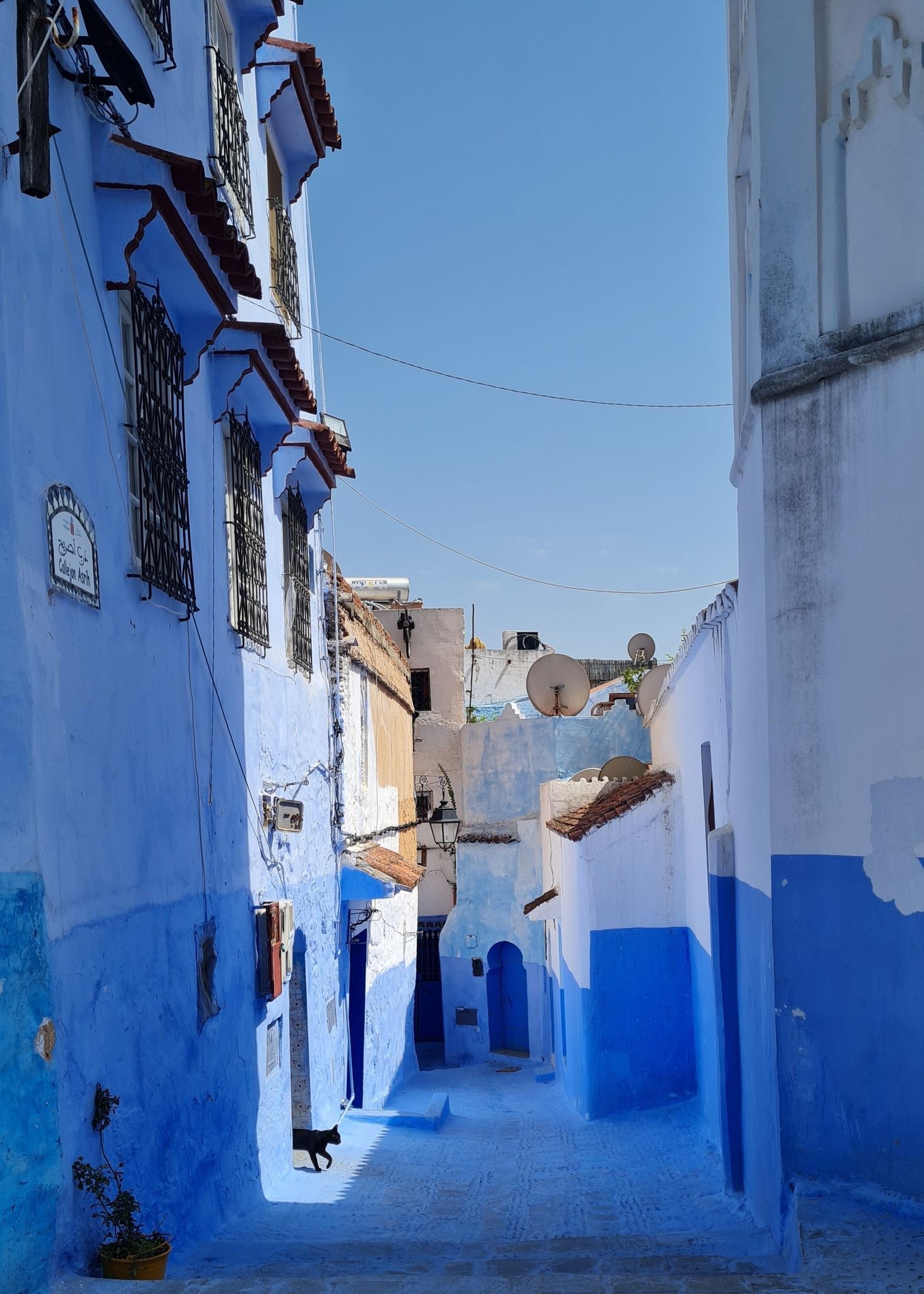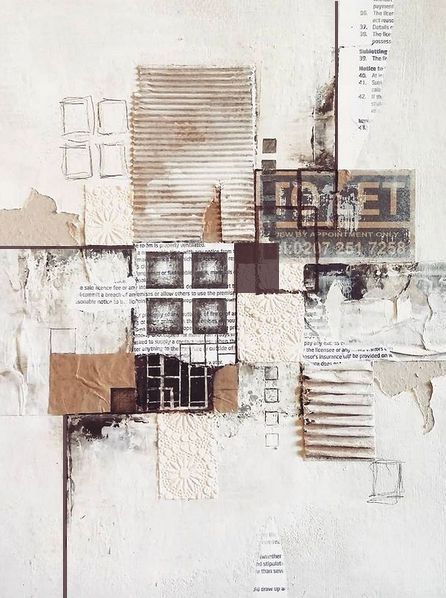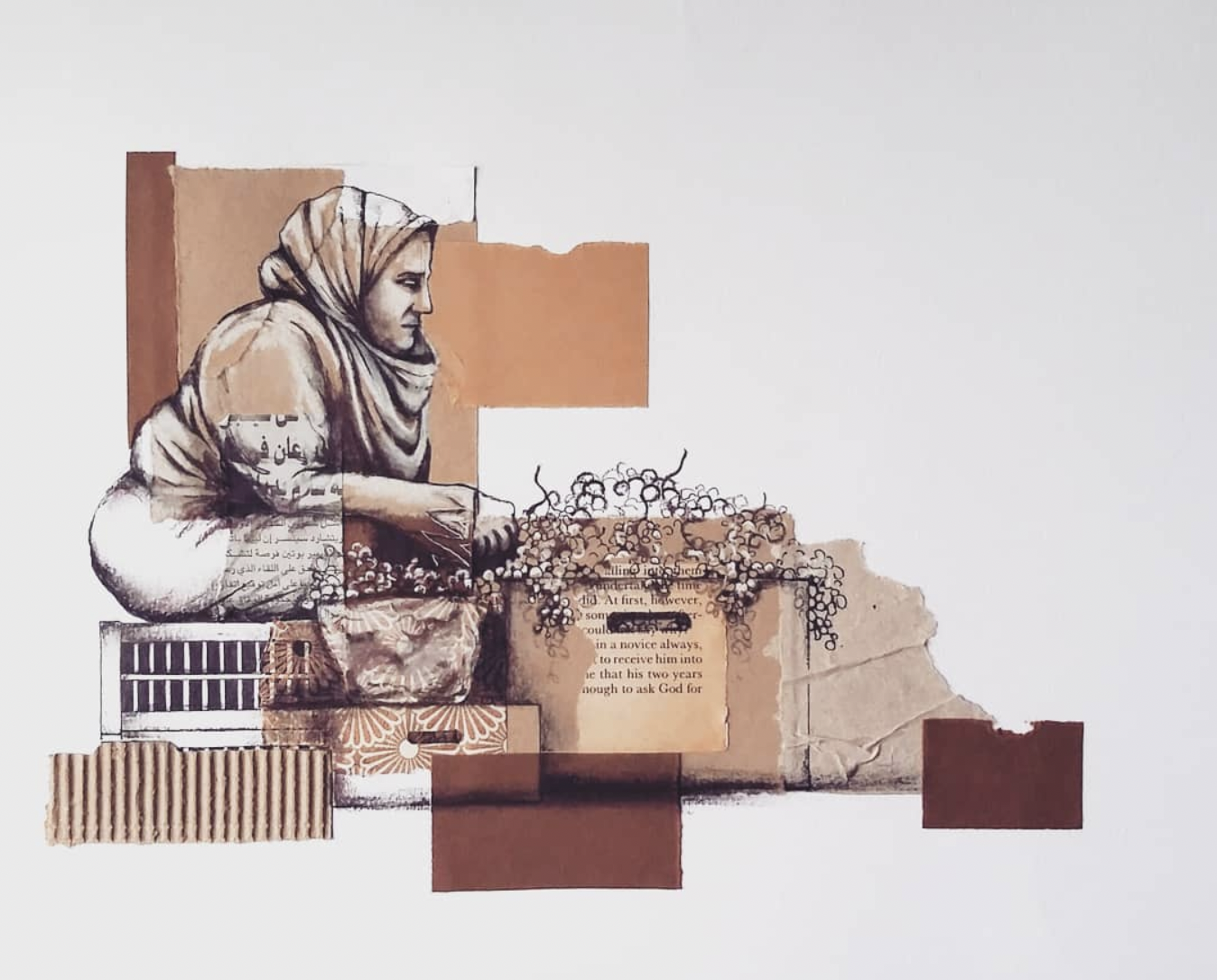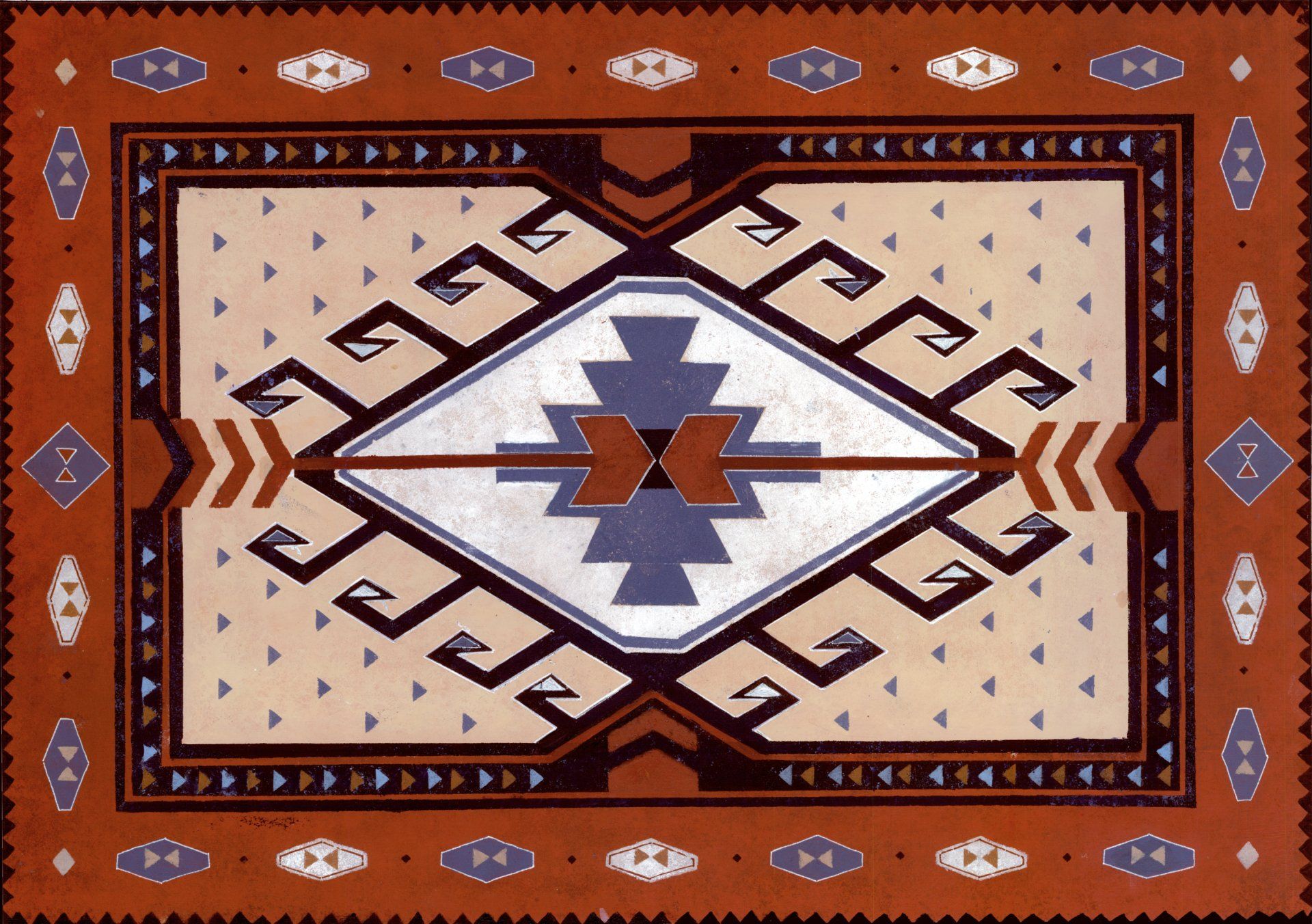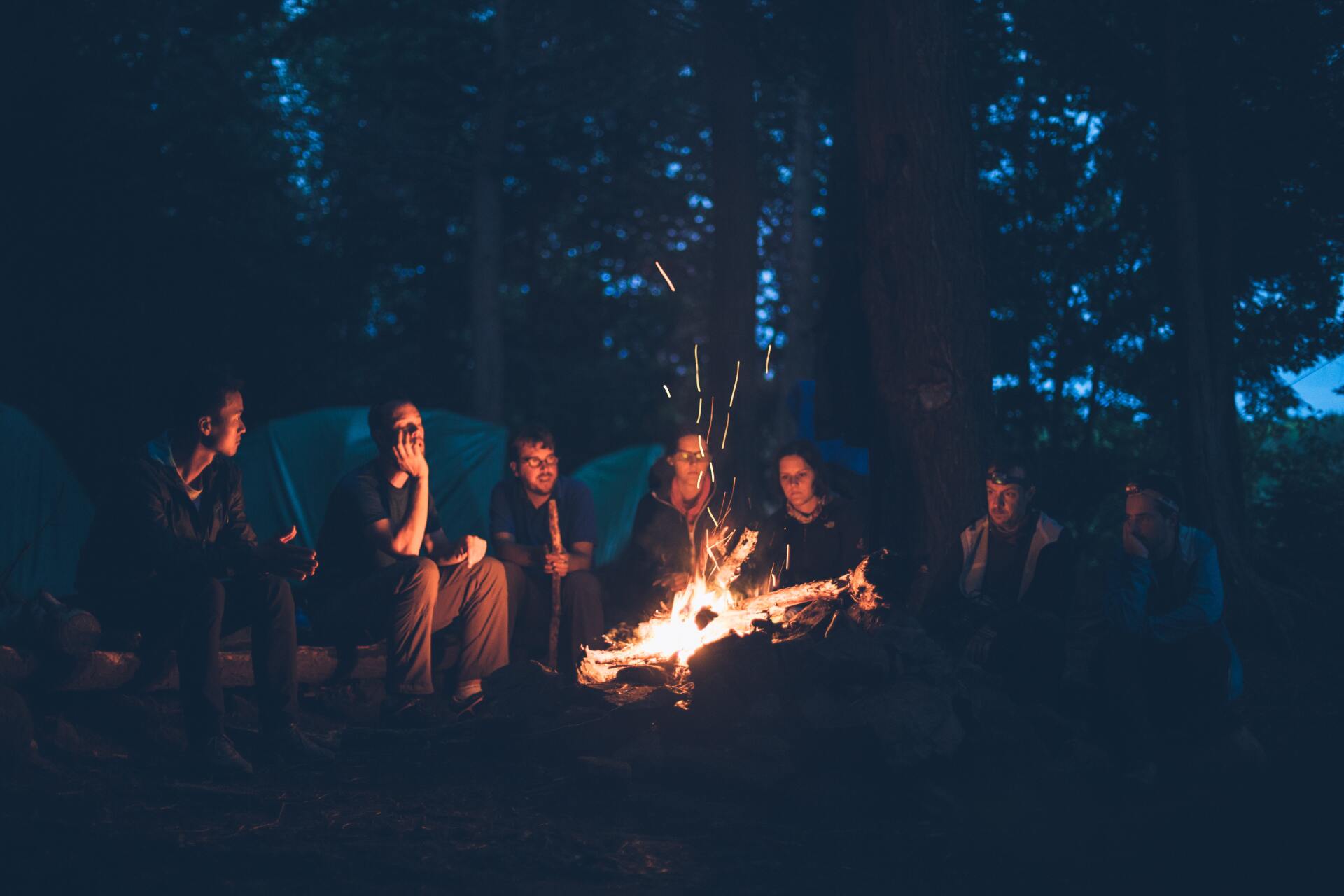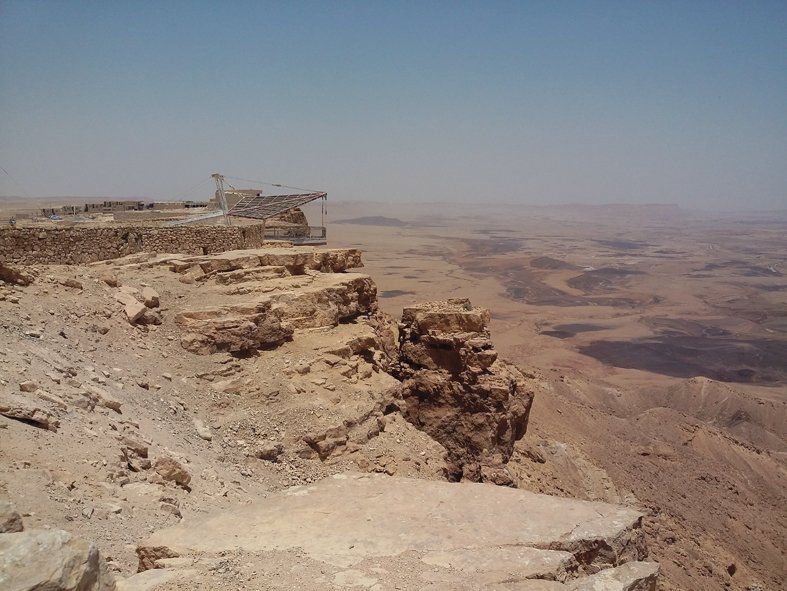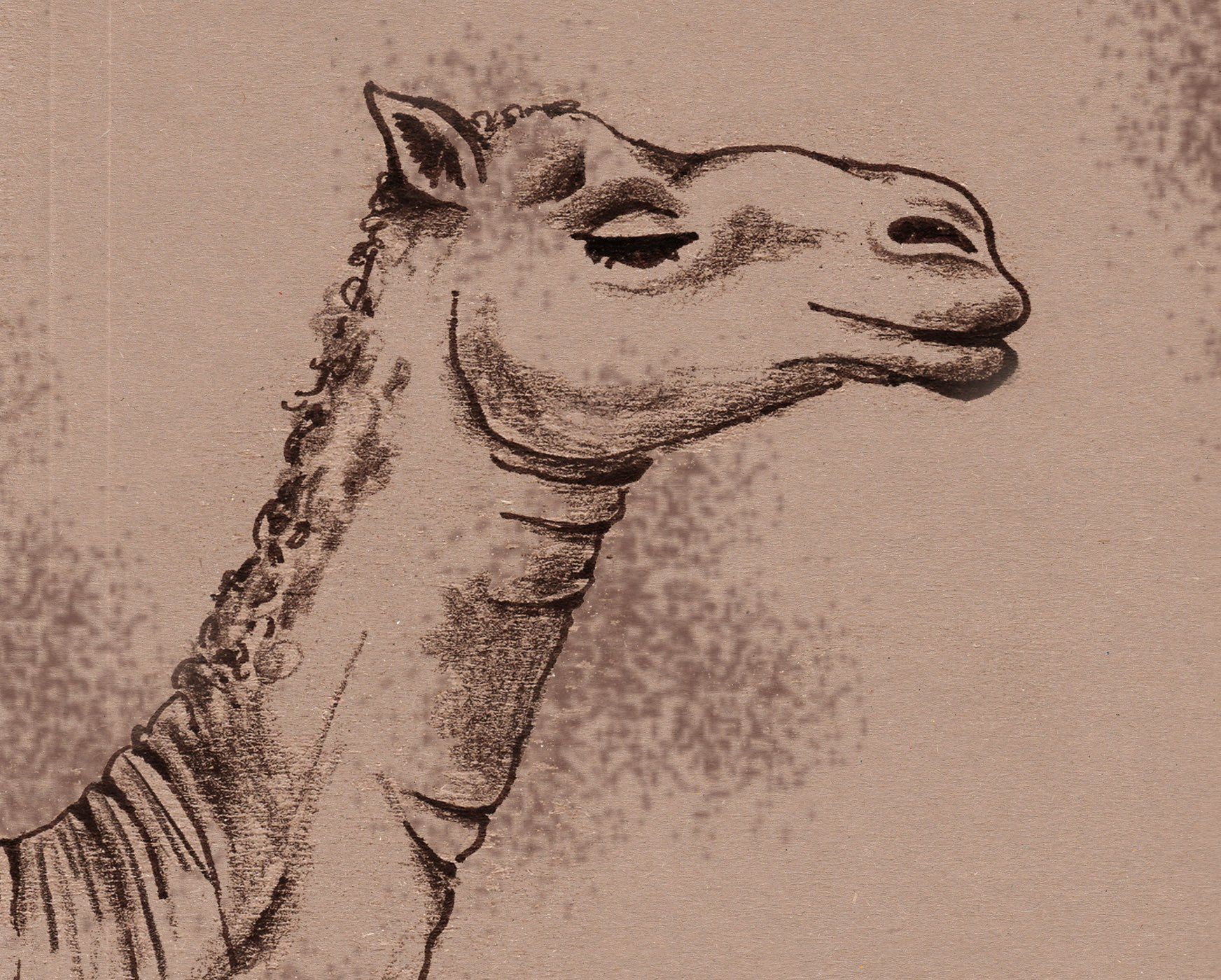Mixed Media Painting Process
July 16, 2020
A behind the scenes look at the process of creating a mixed media artwork.

Here I will describe the steps involved in creating this mixed media piece 'Unrecognised'.
I used the photo below as an initial reference. I liked the variety of structures it shows and how they are arranged on a slope, allowing the viewer to see several buildings at once. However, I wanted the composition of my piece to be tighter, so I decided to arrange the buildings more closely together and to flatten the shapes to create a more abstract interpretation.
Inspiration and Reference
The inspiration for this piece was the unrecognised Bedouin villages in the Negev desert. I caught many fleeting glimpses of the numerous settlements during my time in the Negev and the messy, haphazard layouts and improvised materials of the buildings left a strong impression on me. I found an unexpected beauty in the ramshackle scenes themselves and in the romanticised idea of living in defiance of modern systems.
I used the photo below as an initial reference. I liked the variety of structures it shows and how they are arranged on a slope, allowing the viewer to see several buildings at once. However, I wanted the composition of my piece to be tighter, so I decided to arrange the buildings more closely together and to flatten the shapes to create a more abstract interpretation.
Sketches
I drew some rough sketches to study the shapes of the buildings and understand their textures and light and dark tones. From this, I decided that the key compositional elements would be the dark areas of entrances and windows, and the mixture of textures - smooth sheets, fabric tarpaulins and corrugated iron walls and roofs.
Collage and Composition
Beginning the actual painting, the first stage - as usual - was collage. I began by ripping some random shapes of crumpled packing paper and gluing these in a rough diagonal layout. I like the dynamism of diagonal compositions and knew that since many of the building shapes would be square, a diagonal element would add some tension and movement.
To balance this, I added more densely textured paper to the opposite corners. This raised square textured paper is the packing material for my paint - each time it is delivered I am equally excited to receive this as the paint itself! To me it suggests rusty manhole covers, discarded industrial materials or perhaps tyre tracks.
The corrugated cardboard has the strongest, most visible texture and is directly representative of the materials of the buildings. I used this to create a strong, balanced, inter-connected structure across the centre of the composition, alternating the horizontal and vertical ridges of the pieces.
Painting
and Freedom
After this comes my favourite stage - background painting. Using a reasonably wide brush and a sponge, I painted quite randomly and roughly over the collage with acrylic paint. I tried to forget about the final picture and just create a random, pleasing mixture of tones and colours. I also aimed to leave some areas of the underlying materials unpainted so their natural textures could contribute to the finished piece. This part was very freeing and the (quite unexpected) results of this stage suggested new ideas for the finished piece.
Definition and Detail
Once this was dry I began defining the buildings a little more. Using the corrugated cardboard structure, I added lighter and darker shapes between the raised areas. I also drew some fabric-like patterns on packing paper and used these to add detail and interest in between the plainer shapes. This process of simplifying and defining different areas is the most mentally and artistically taxing stage, with much sighing and inner drama!
Eventually, when I was mostly happy with the overall structure and balance of the piece, I added windows and some vertical lines printed with the edge of some corrugated cardboard, mimicking the hand drawn patterns. Final details such as the trees and the wavy, corrugated edge of the roofs were drawn with a fine nibbed pen.
I'm mostly happy with the finished piece and feel it represents the messy order of the unrecognised settlements whilst also expressing some of the sense of mystery that I felt as an outsider. However, the final, and perhaps most important, aspect is of course the effect it has on you, the viewer!


